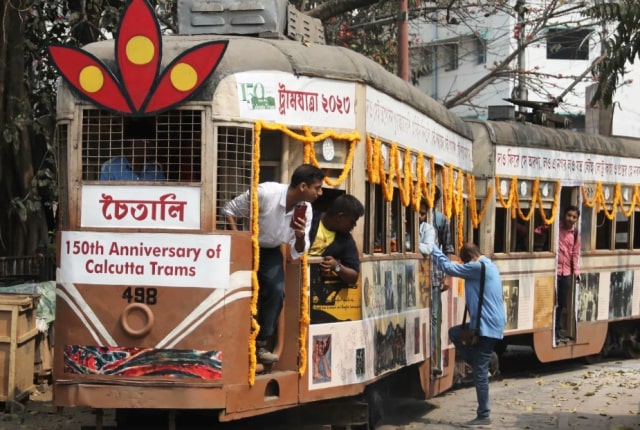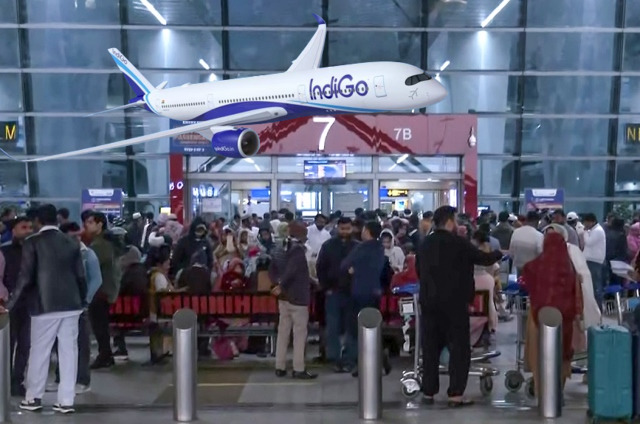
As Kolkata Trams Chug Away Into History…
The West Bengal government’s decision to dispense with the more than a century and a half old tram as a mode of public transport in the city of Kolkata (known till January 1, 2001 as Calcutta) is regrettably seen as an avoidable erasure of an important component of history of the heritage metropolis.
Environmentalists and also legions of “lovers of tram” ran a sustained campaign over many years to impress upon first the Left Front government and then the current regime headed by Mamata Banerjee that tram is not only the automatic choice for ferrying passengers for its very little carbon emissions in the highly polluted city, but with reforms and political will, the state government owned Calcutta Tramways Company (CTC) could have been made a viable proposition.
Besides the spirited campaign by civic society, which, however, failed to impress the powers that be, a number of expert committees, constituted over the years to look into the working of CTC and recommend measures to make its operations viable, had the mortification of seeing their counsel not finding favour with the government.
From the Calcutta Metropolitan Planning Organisatio (CMPO) to Planning Commission working group on metropolitan transport service to National Transport Policy Committee all wanted tram to remain in service in the crowded city of Calcutta where all modes of private and public transport will experience difficulty in negotiating traffic on a working day. And when political parties or religious groups take out processions – these are not too infrequent – journey by city road would be a nightmarish experience.
Had the state government advised the CTC management to scrap the very old tram coaches and do at the same time modernization of the rest of the fleet and change the worn out tracks, of course by bankrolling the scheme, the environment friendly mode of transport could have been spared to sing its swansong.
The recommendation to the effect that the Kolkata tram system should have a modern fleet of at least 500 that would allow it to increase the frequency of service generating more revenue in the process came in for close review of the authorities. But finally nothing happened. The government was getting increasingly concerned about mounting CTC losses creating pressure for more and more subsidies.
There was a suggestion to the effect that it might not be advisable to run tramcars in some highly congested parts of the city that only slowed down vehicular traffic movement. Instead new lines should be opened in more congenial parts of the city by earmarking exclusive land for tram movement. Though the suggestion merited serious consideration, the authorities for some undisclosed reasons didn’t take follow-up action.
ALSO READ: Kolkata’s Iconic College Street Coffee House
In retrospect, people suspect, the enormity of the task might have been the dissuading factor to act on the recommendation. What, however, defies logic is why the successive governments in the state didn’t act on the suggestion to leave enough exclusive space for tram when new satellite cities around Kolkata from Kalyani to Salt Lake to New Town were created.
“Such cities were built in vast swathes of land and to our dismay, it didn’t occur to successive state governments to leave space for the environment friendly tram transport. Perhaps, policymakers weren’t aware, tram has either made a comeback or introduced in many developed and developing countries to keep urban pollution down. Citizens in all such places have given a thumbs up to tram,” says urban planner Sudhir Bhargava.
Yes Kolkata (then Calcutta), which according to Rudyard Kipling was “chance –directed, chance-erected,” suggesting its unplanned and rapid growth, has left only 6 per cent of surface area for roads. Moreover, over the years, hawkers after seizing most of the footpath have descended on the road with their wares, with the authorities looking the other way. Such incursions on road badly affected movement of tram in the city.
Tram being bound to laid out tracks, it cannot unlike two, three and four-wheelers manoeuvre through traffic knots. As it would happen, instead of bringing order to traffic movement and clearing roads of all kinds of encroachments, the government exercised the easiest option of calling tram a dinosaur in modern times. Like giving a dog a bad name before hanging it, West Bengal transport minister Snehasis Chakraborty described tram as a “slow mode of transportation” while commuters demanded “faster options.”
The government offered the specious argument that tram cannot ply on roads along with other vehicles, for that creates congestion. Driving the last nail in the coffin, Chakraborty said the tram service had to be dispensed with to “ensure that people don’t get late to office during peak hours” due to traffic snarl up. He, however, offered city dwellers and tourists for whom a tram ride is in their bucket list the consolation of introduction of a “heritage” service on the city’s maidan. In this context, chronicler Palashbaran Paul says between 1930 and 1950, quite a few European cities disbanded tram service. But starting 1980s, tram started making a comeback in some of these cities. More encouragingly, some European cities where tram was never there, it got introduced. Paris, as Paul points out, is an interesting case. Since the city has an efficient metro rail system since 1990, the administration didn’t feel the need to have a tram network overground. But there also, tram service was commissioned in 1992.
Between 1985 and 1994, France introduced tram in four other cities. Seeing the benefits of tram as an environment friendly mode of transport and the way citizens embraced it, another at least 20 French cities have started using tram since 2000, says Paul. France apart, Germany has tram in eight cities and Great Britain in three cities. Closer home in China, tram services are available in 25 cities.
The government’s step motherly attitude towards tram over many years left no one in doubt about the inevitability of the curtain coming down on tram at some stage. That moment has arrived. Real estate developers are very happy that tram has become a thing of the past and the government will in phases monetise the vast chunks of land CTC owns in the city’s prime locations.



